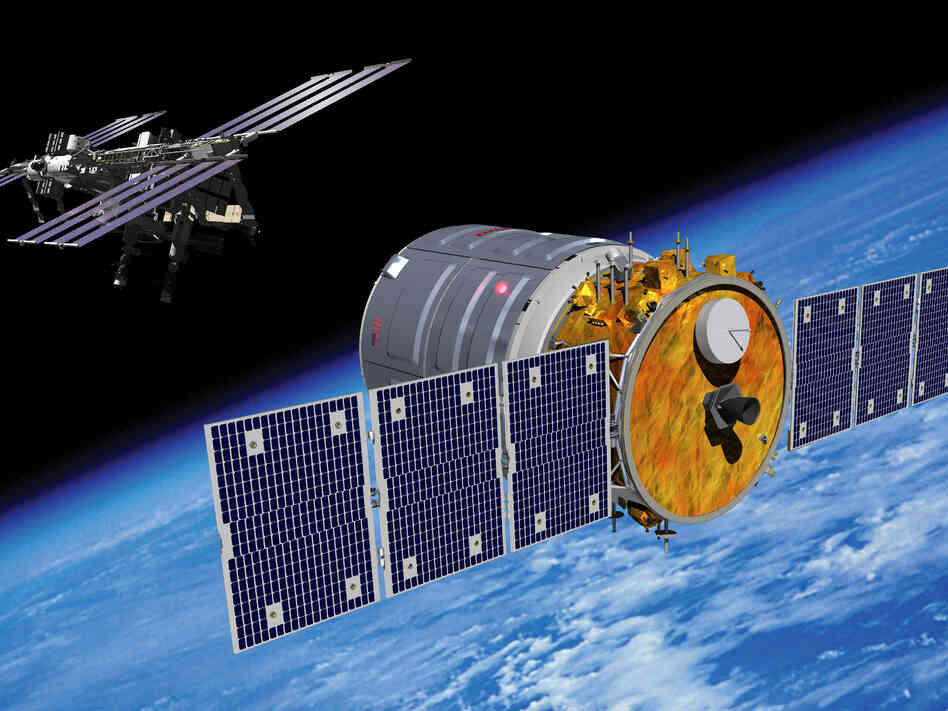Copyright 2013 Robert Clark
In the post Budget Moon flights, I argued that by using a capsule half-sized to the Dragon capsule at ca. 2,000 kg dry mass, that we could launch a manned lunar landing mission carried to LEO by a single Delta IV Heavy or Ariane 5 ME, with a separate man-rated launcher to carry the capsule and crew. And if using the Falcon Heavy at the stated $1,000 per pound price point it could be done at launch costs of less than $100 million.
I'll discuss such a half-sized capsule here. This report discusses a capsule with such low dry mass:
Phoenix: A Low-Cost Commercial Approach to the Crew Exploration Vehicle
Abstract: Since the announcement of President Bush’s Vision for Space Exploration (VSE) in early 2004, the architecture of Project Constellation has been selected. The system will be centered around the Crew Exploration Vehicle (CEV), which has been dubbed by NASA administrator Michael Griffin as “Apollo on steroids”. The CEV is to be launched on a new launch vehicle, derived from existing shuttle technology. The development of this newBelow is page 3 from this report:
spacecraft and launch vehicle is a very costly proposition. An alternate approach is proposed in this study. The Phoenix is a smaller spacecraft designed specifically to be launched on the Falcon 5 vehicle under development by SpaceX. Because the SpaceX vehicle will cost only a fraction of today’s launch costs, the Phoenix is estimated to cost less than half of the price of the CEV. This reusable three person capsule utilizes an innovative re-entry concept, which allows for a cylindrical spacecraft with greater interior volume. This extremely cost-effective spacecraft is an attractive option for fulfilling VSE requirements.
_______________________________________________________________________
_______________________________________________________________________
...
Our crew capsule would not need its own propulsion system, so get the dry mass by subtracting off the masses in the "Propulsion (SPS)" section to get 2,160 kg. We will retain the RCS system though. Note the 2,160 kg dry mass actually also includes the mass for a crew of three and the mass for their space suits, as well as the food and water for a mission to and from the Moon.
The heat shield is of the innovative "parashield" design:
This with its truss structure/drive system would amount to about 15% of the capsules dry weight. This is about the same as Apollo era heat shields. However, the lightweight PICA-X material used on the Dragon capsule can withstand lunar return velocities and would only weigh half as much. This would subtract about 160 kg from the dry mass.
This report on a "Phoenix" capsule only envisions this crew module to carry the crew from LEO to lunar orbit and back with a separate module to be used on a lunar lander, a la the Apollo architecture. But following the Early Lunar Access architecture we could use this one single crew module for the entire flight.
It is notable that Orbital Sciences Cygnus capsule is of similar size to this "Phoenix" crew capsule.
Artist's rendering of Cygnus spacecraft approaching the International Space Station.
The Cygnus dry mass is 1,500 kg. This includes the propulsive service module at the base. The service module is based on Orbital's Star satellite bus. According to Astronautix this has a dry mass of about 800 kg. So the capsule itself is 700 kg. Adding on the life support elements as given in the "Phoenix" capsule report, would result in a dry mass of about 2,000 kg.
This is important because the Cygnus is built by Thales in Italy so it means Europe could make all the components for the Moon mission, including the man-rated launch rocket as described in post The Coming SSTO's: multi-Vulcain Ariane.
The "Phoenix" capsule report estimates billions of dollars in development cost. But this is using traditional NASA costing estimates. However, SpaceX has shown that development costs can be cut by a factor of 10 by private financing both for launchers and for crew capsules. From its half-size compared to the Dragon we might estimate its development as privately financed at half of the $300 million spent developing the Dragon, so to only $150 million.
Bob Clark
Update, May 1, 2014:
For the passage above highlighted in red, I am now inclined to think that 1,500 kg dry mass does not include the mass of the service module, which is, the propulsion unit at the bottom. It's because of this page:
Cygnus Spacecraft Information
http://www.spaceflight101.com/cygnus-spacecraft-information.htmlPressurized Cargo Module
Cygnus standard and Cygnus enhanced use Pressurized Cargo Modules built by Thales Alenia Space, Italy. The module is based on the Multi Purpose Logistics Module that was flown on multiple Space Shuttle Missions to deliver pressurized cargo to ISS.
It is 3.07 meters in diameter and has a length of 3.66 meters in its standard configuration and 4.86 meters with one segment added in the enhanced configuration. The standard PCM has a dry mass of 1,500 Kilograms and the enhanced version weighs 1,800kg. 2,000 Kilograms of cargo can be packed into the standard PCM while the enhanced version allows 700kg more to be loaded. The cargo module has a pressurized volume of 18.9 cubic meters in the standard configuration and 27 cubic meters in the enhanced configuration. Power consumption of the PCM is less than 850 watts.
This page also has a separate section on the service module which suggests that mass amount above was only for the pressurized module itself.








